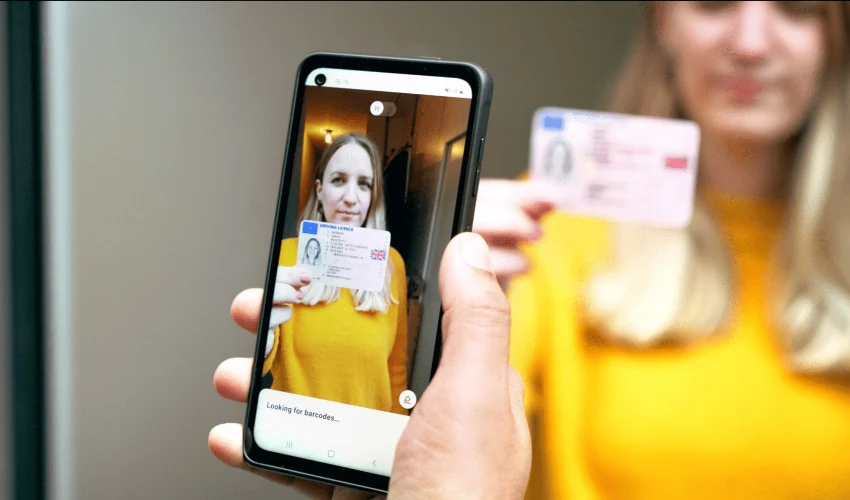In an era where technology and forgery techniques are constantly advancing, identifying a scannable fake ID has become a crucial skill for law enforcement, business owners, and anyone responsible for verifying identification. Fake IDs have grown increasingly sophisticated, often passing a quick visual inspection. However, with the right knowledge, anyone can effectively spot a fraudulent ID. This guide will help you understand the key indicators of a scannable fake ID and how to detect them effectively.
Understanding Scannable Fake IDs
Scannable ID are counterfeit identification cards designed to pass electronic verification systems. These IDs often have encoded information in their barcodes or magnetic strips, mimicking legitimate government-issued IDs. While they may appear authentic at first glance, subtle discrepancies can reveal their falseness.
- Examine the Physical Features
One of the easiest ways to detect a fake ID is by scrutinizing its physical characteristics. Key things to check include:
- Holograms and Watermarks: Most government-issued IDs contain holographic images or watermarks that are difficult to replicate. A fake ID may have poor-quality holograms or none at all.
- Font and Spacing: The font type, size, and spacing on a genuine ID are consistent. Counterfeit IDs may have incorrect fonts, improper spacing, or misplaced text.
- Edges and Material Quality: Authentic IDs are made with high-quality materials and usually have smooth edges. A fake ID might have rough or peeling edges, indicating poor craftsmanship.
- UV Light Test: Many official IDs include ultraviolet (UV) features that only appear under blacklight. If an ID lacks UV markings or they look different from a real one, it’s likely fake.
- Analyze the Barcode and Magnetic Strip
Most modern idzone include a barcode or magnetic strip that contains encoded information. While fake IDs may scan, they often contain errors in the encoded data. To spot issues:
- Check for Mismatched Information: When scanned, the data retrieved should match what is printed on the ID. If the scanned details are different, the ID is fake.
- Use a Reliable Scanner: Invest in a high-quality scanning device that can read barcodes and magnetic strips accurately. Some low-quality fakes may pass with basic scanners but fail on advanced systems.
- Look for Incorrect Formatting: Legitimate IDs follow a structured format. If the barcode does not adhere to expected standards, it’s a red flag.
- Pay Attention to Personal Details and Security Features
- Date of Birth Discrepancies: Many fake IDs alter birth years to make underage individuals appear older. Look for unusual date formatting or inconsistencies.
- Photo and Signature Verification: Compare the photo and signature with the person presenting the ID. Poorly altered images, pixelation, or unnatural shadows are signs of a fake.
- Raised Text and Laser Engraving: Some IDs include raised lettering or laser-engraved images that cannot be easily duplicated. Running your fingers over the text can help detect forgeries.
- Observe the Person’s Behavior
- Nervousness and Avoidance: Someone using a fake ID may exhibit anxiety, avoid eye contact, or appear overly defensive when questioned.
- Inconsistencies in Information: Ask simple questions such as their birthdate or address. If they hesitate or provide conflicting answers, they might be using a fake ID.
- Overconfidence: Some individuals using fake IDs may try to act overly confident to avoid suspicion. Be cautious of unnatural behavior.
- Verify Through Secondary Methods
If an ID appears suspicious, use additional verification steps:
- Compare with a Known Valid ID: Keep a sample of an authentic ID from the same state or country for reference.
- Check Against a Database: Many establishments have access to databases that verify ID legitimacy.
- Ask for Additional Identification: If in doubt, request a secondary form of ID, such as a credit card, student ID, or passport.
- Stay Updated with the Latest ID Features
Governments frequently update ID designs and security features to combat counterfeiting. Stay informed about recent changes in ID formats, security measures, and common fake ID tricks used by forgers.
- Legal and Ethical Considerations
- Know the Laws: Handling fake IDs improperly can have legal consequences. Ensure you follow local laws when confiscating or reporting a suspected fake ID.
- Respect Privacy: While verifying an ID, be mindful of the person’s privacy and handle the situation professionally.
Conclusion
Detecting a scannable fake ID requires a combination of observation, technological tools, and knowledge of common forgery techniques. By examining physical features, using reliable scanners, verifying personal details, and staying informed about the latest security measures, you can effectively identify fake IDs. Whether you are a business owner, security personnel, or simply someone who wants to ensure proper identification, these methods will help you confidently spot fraudulent IDs and prevent potential legal or security risks.
